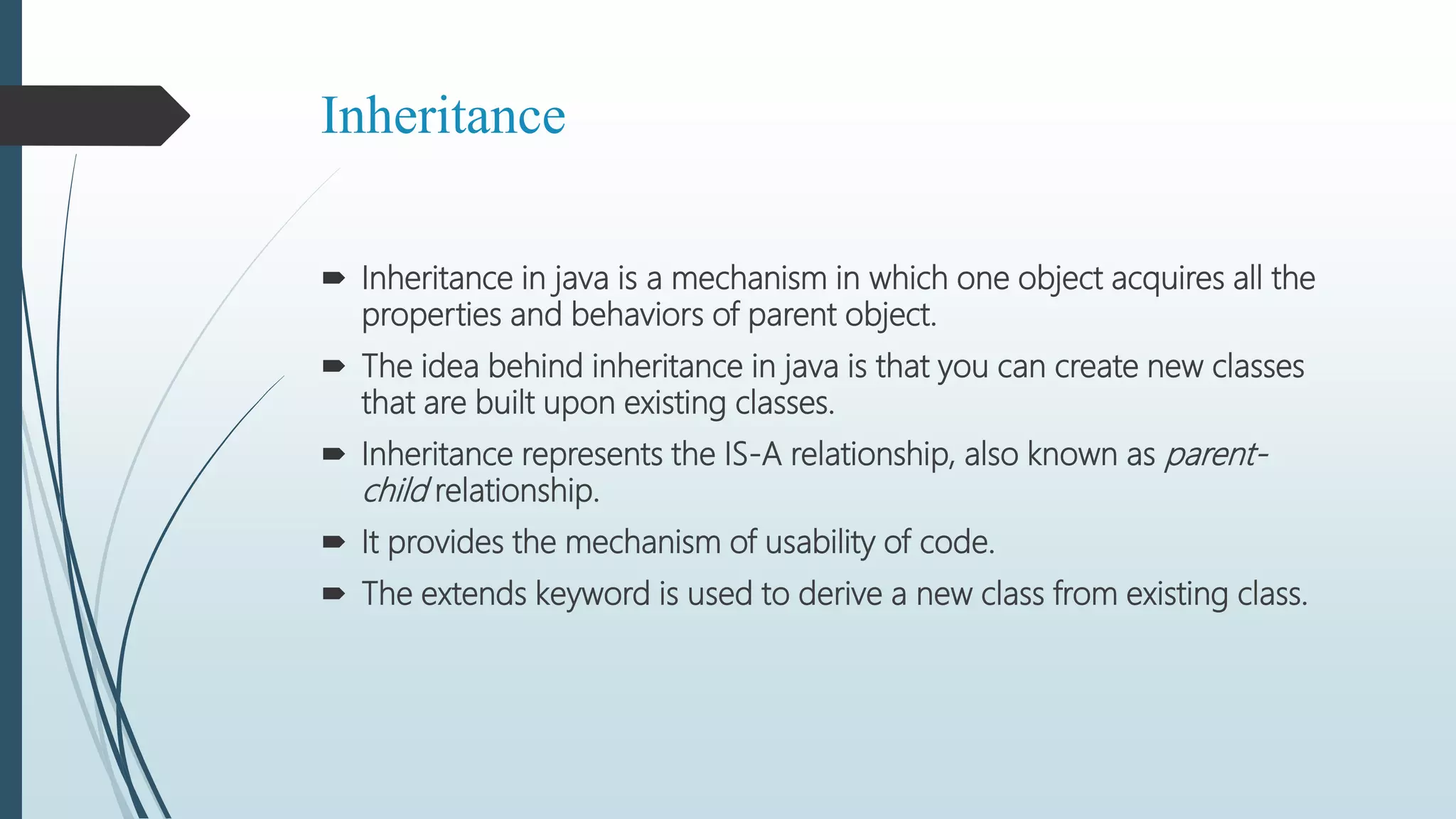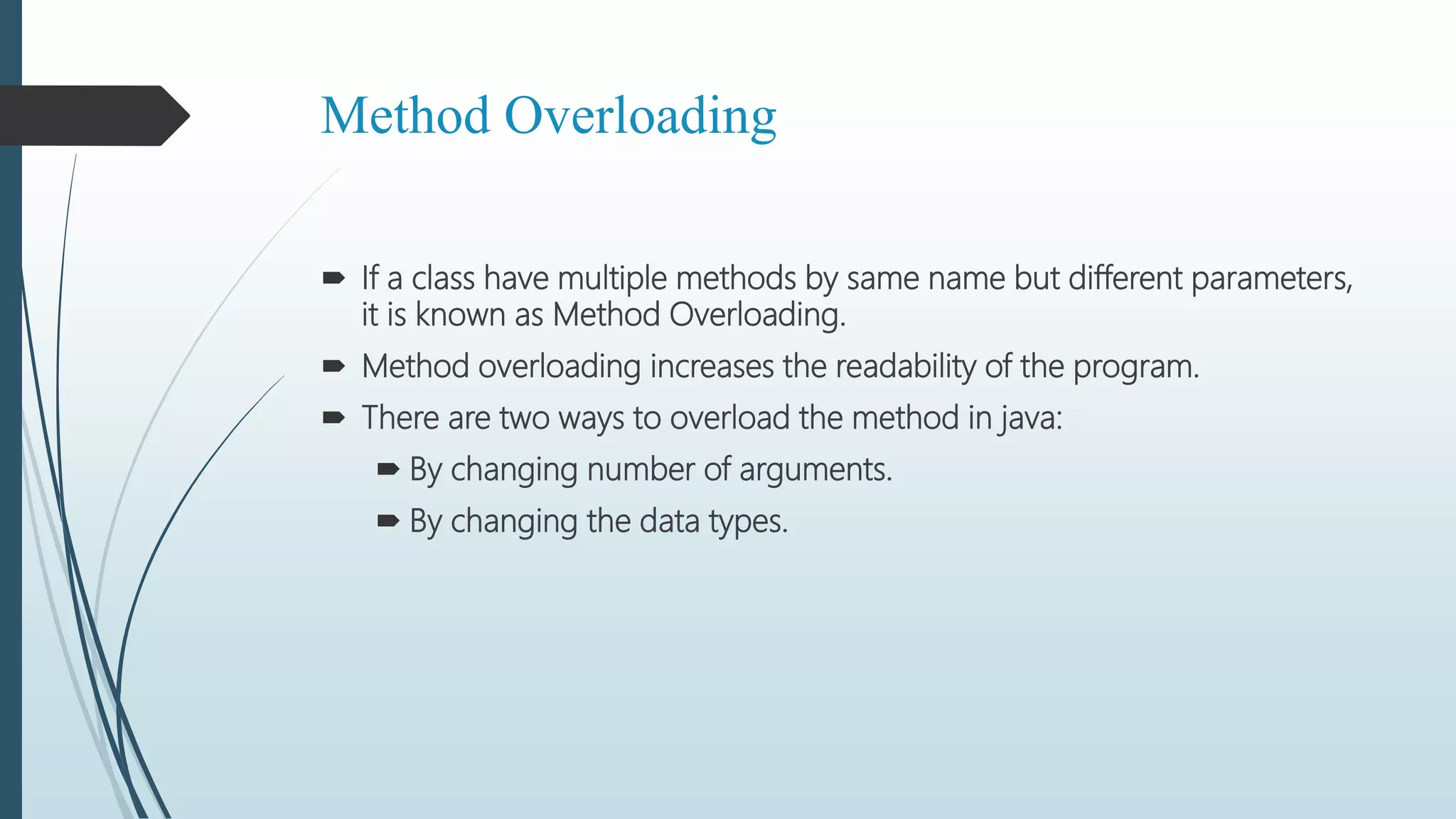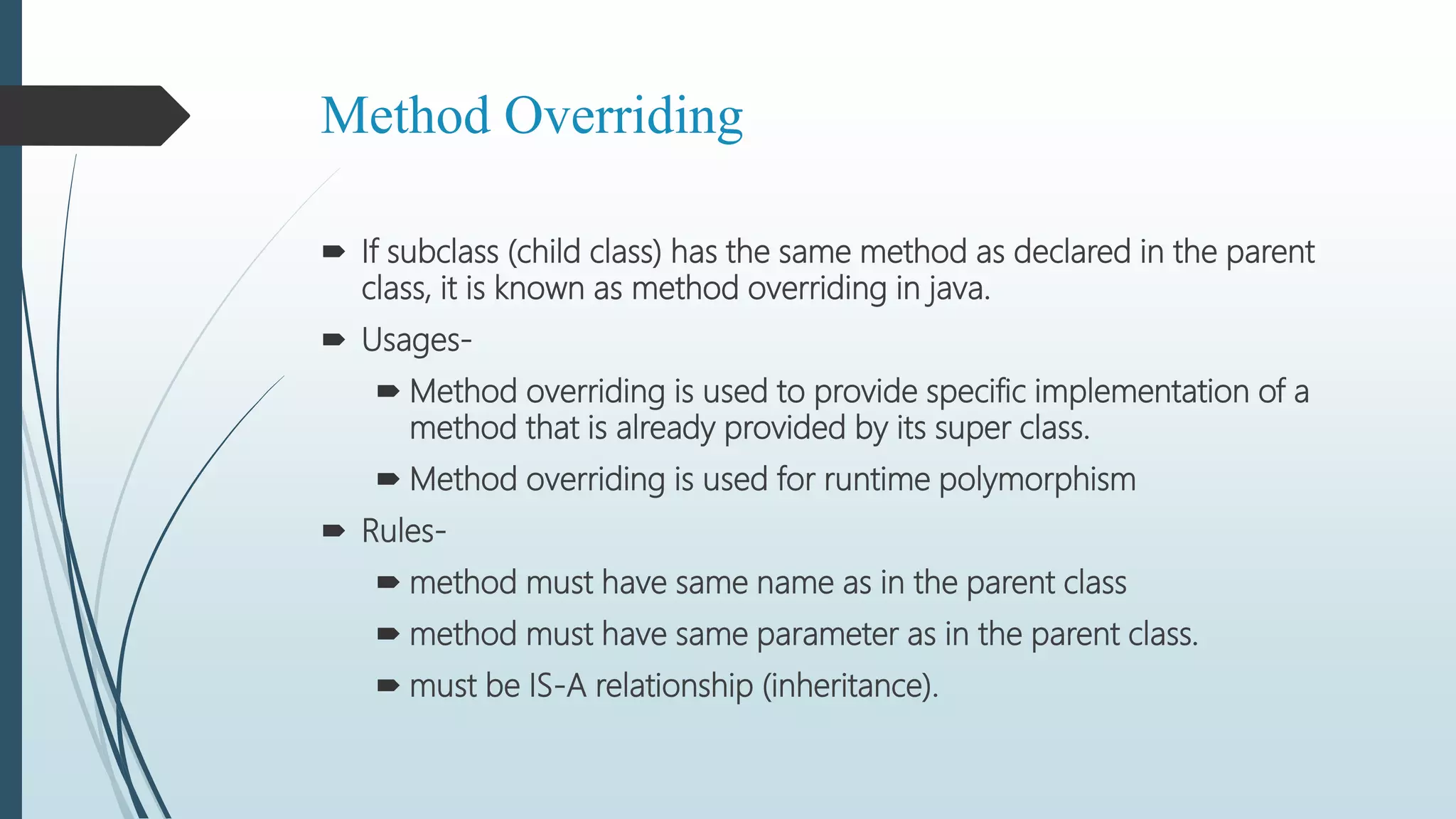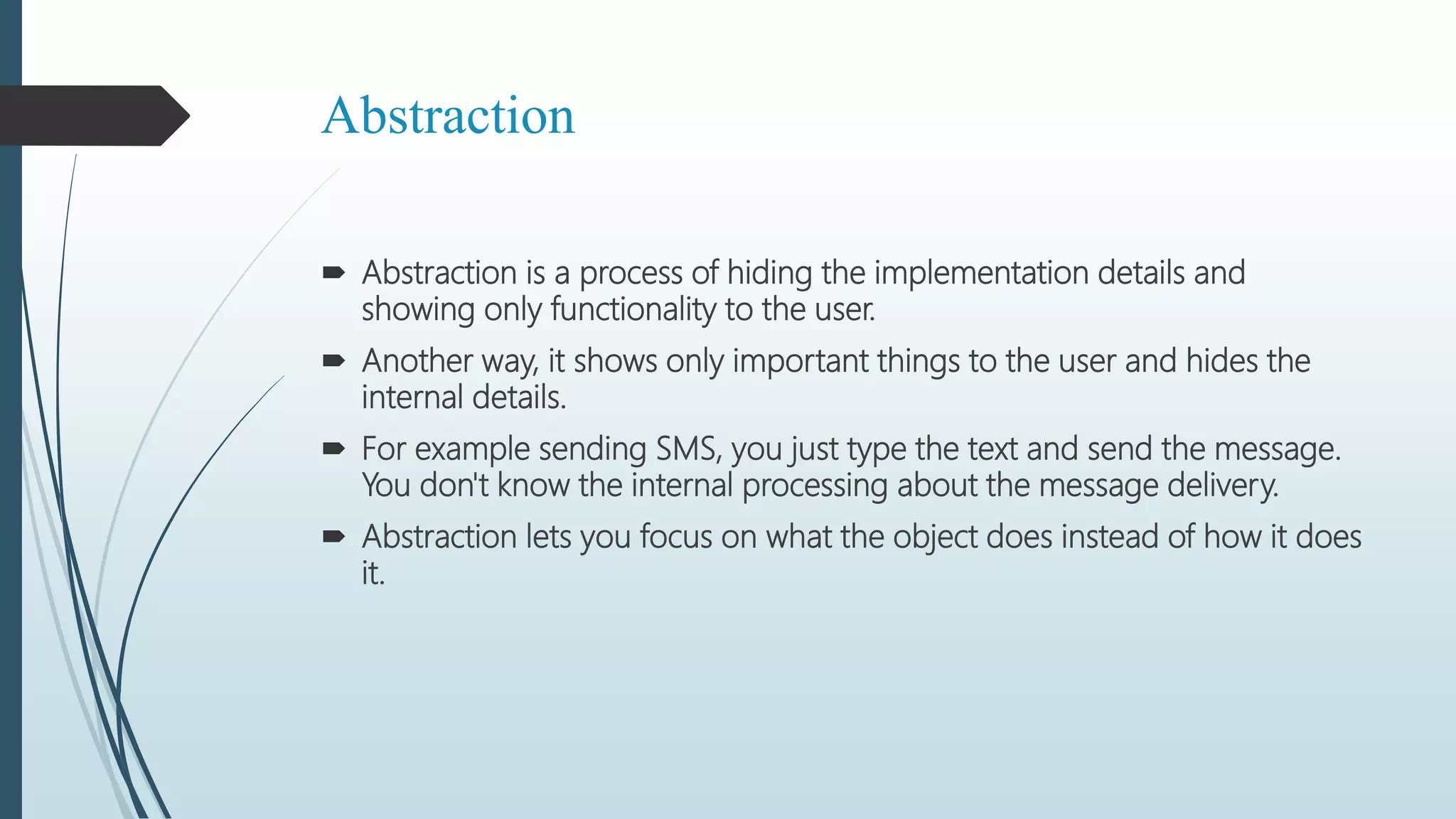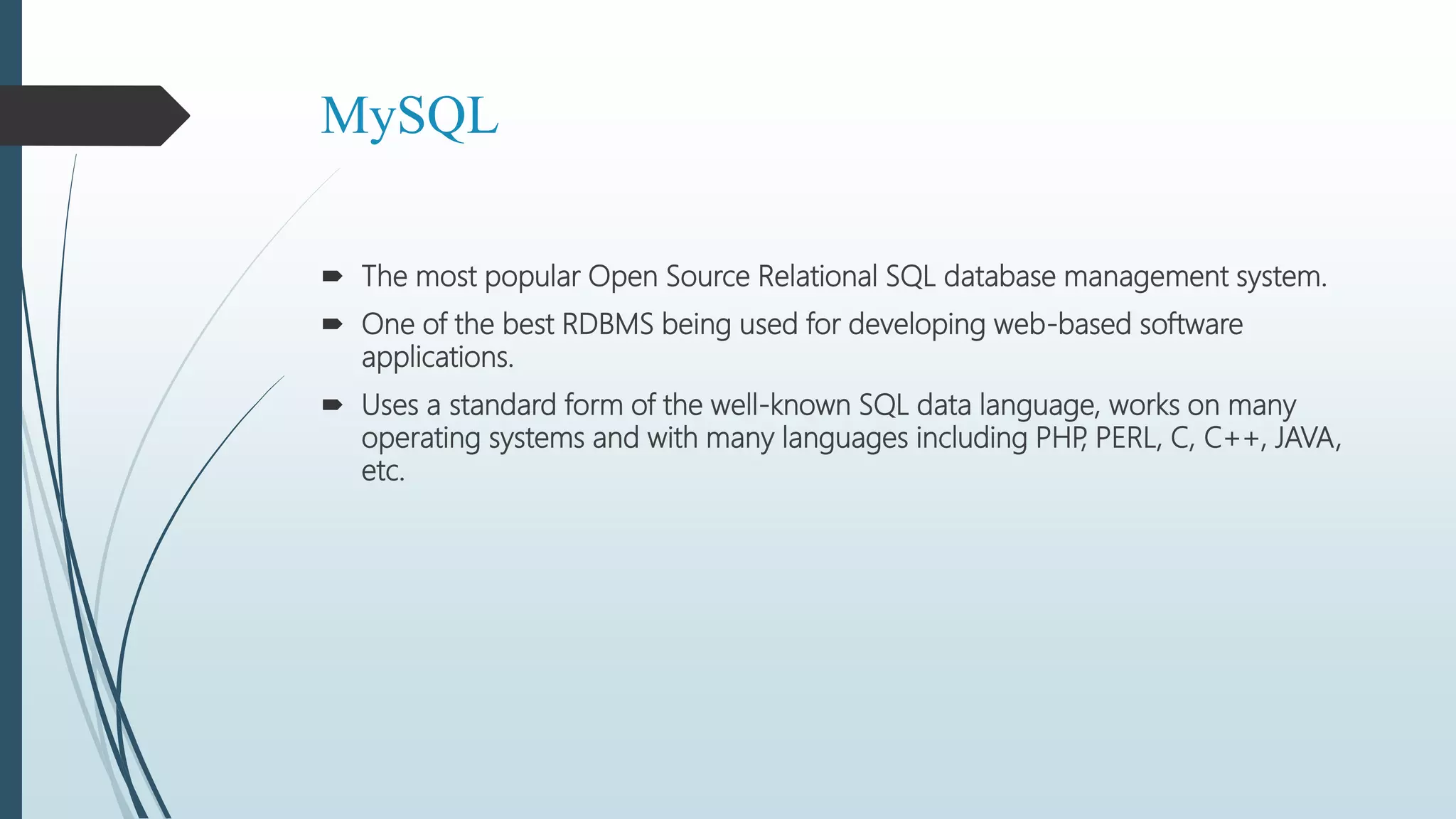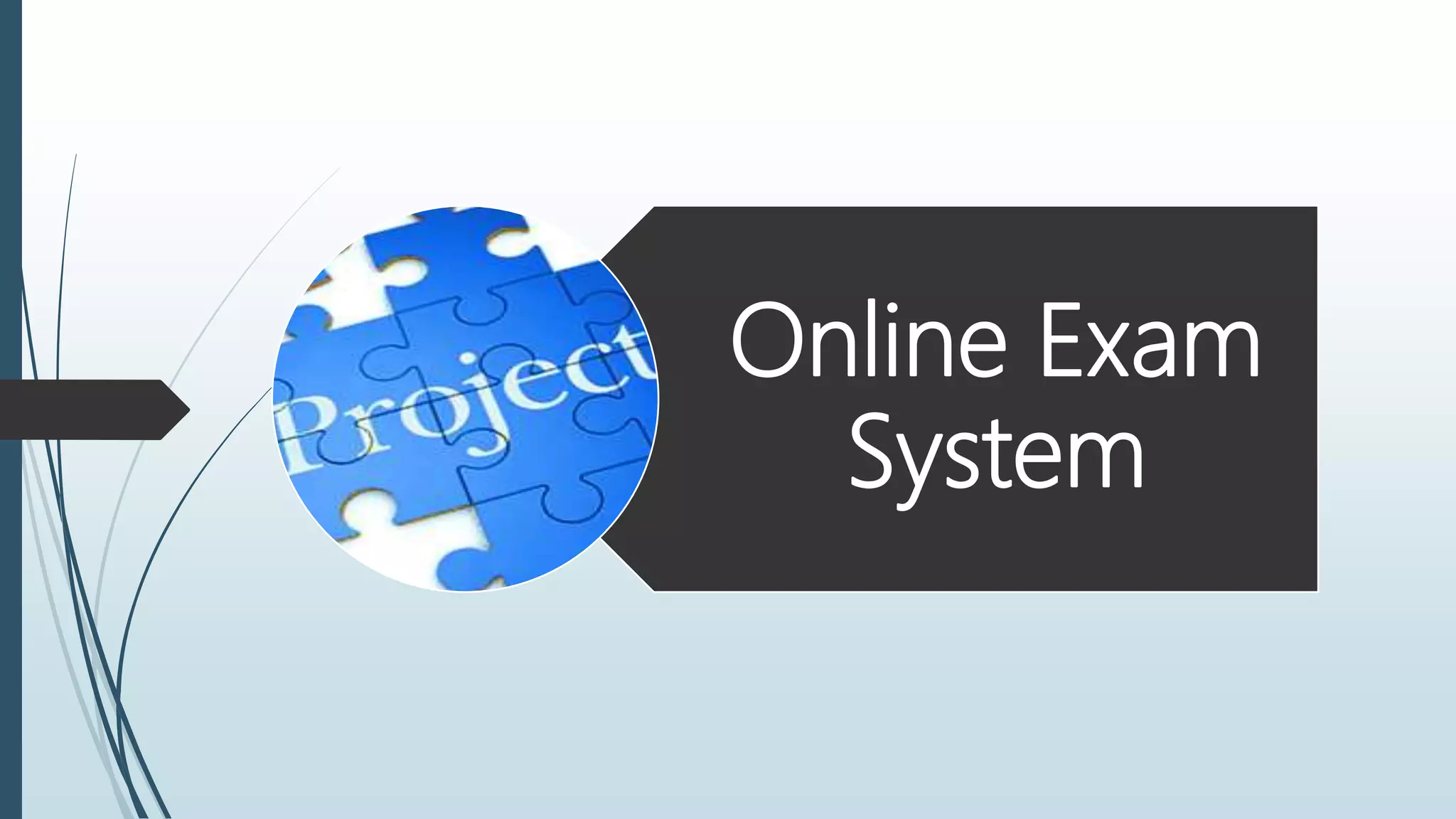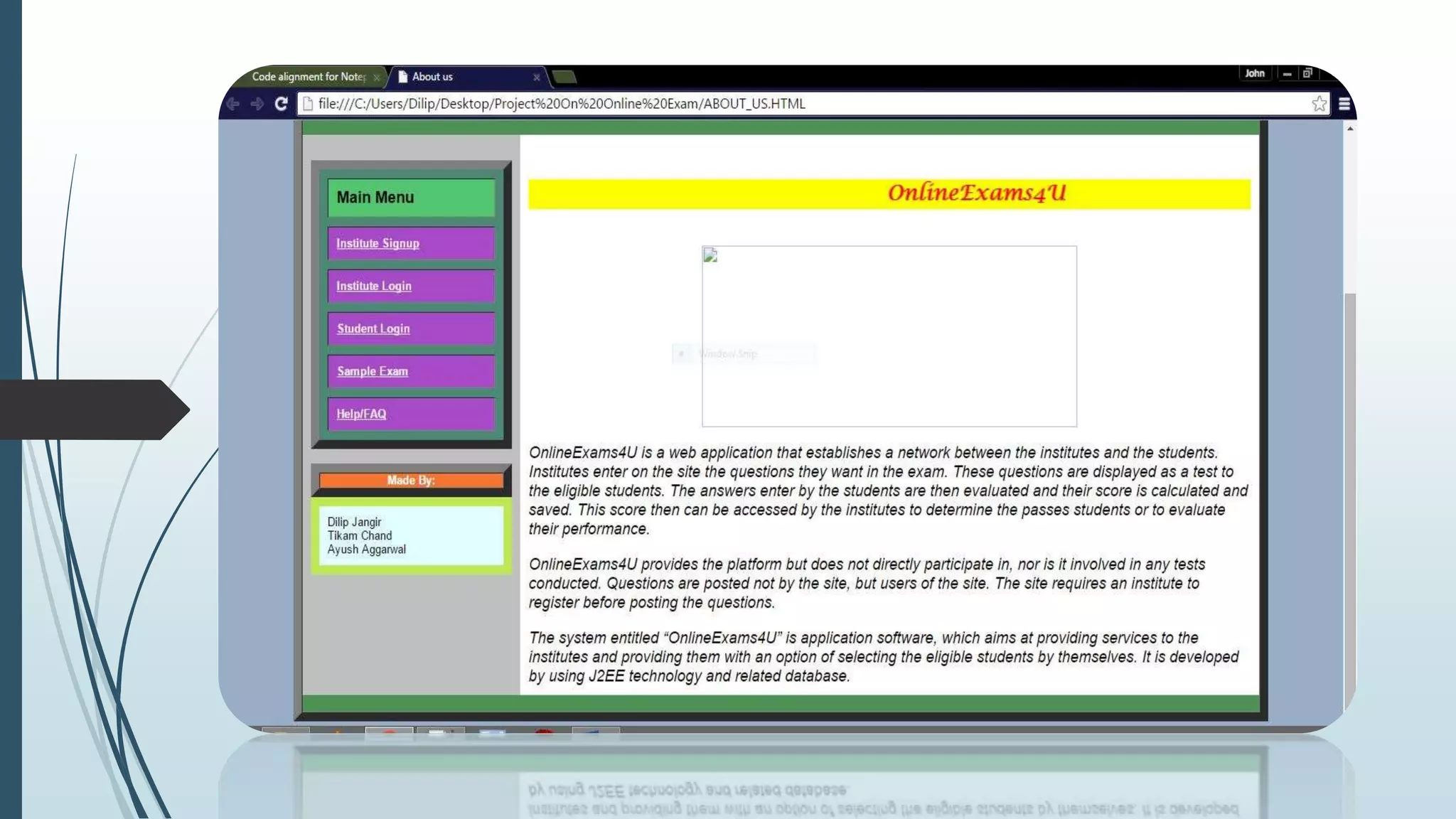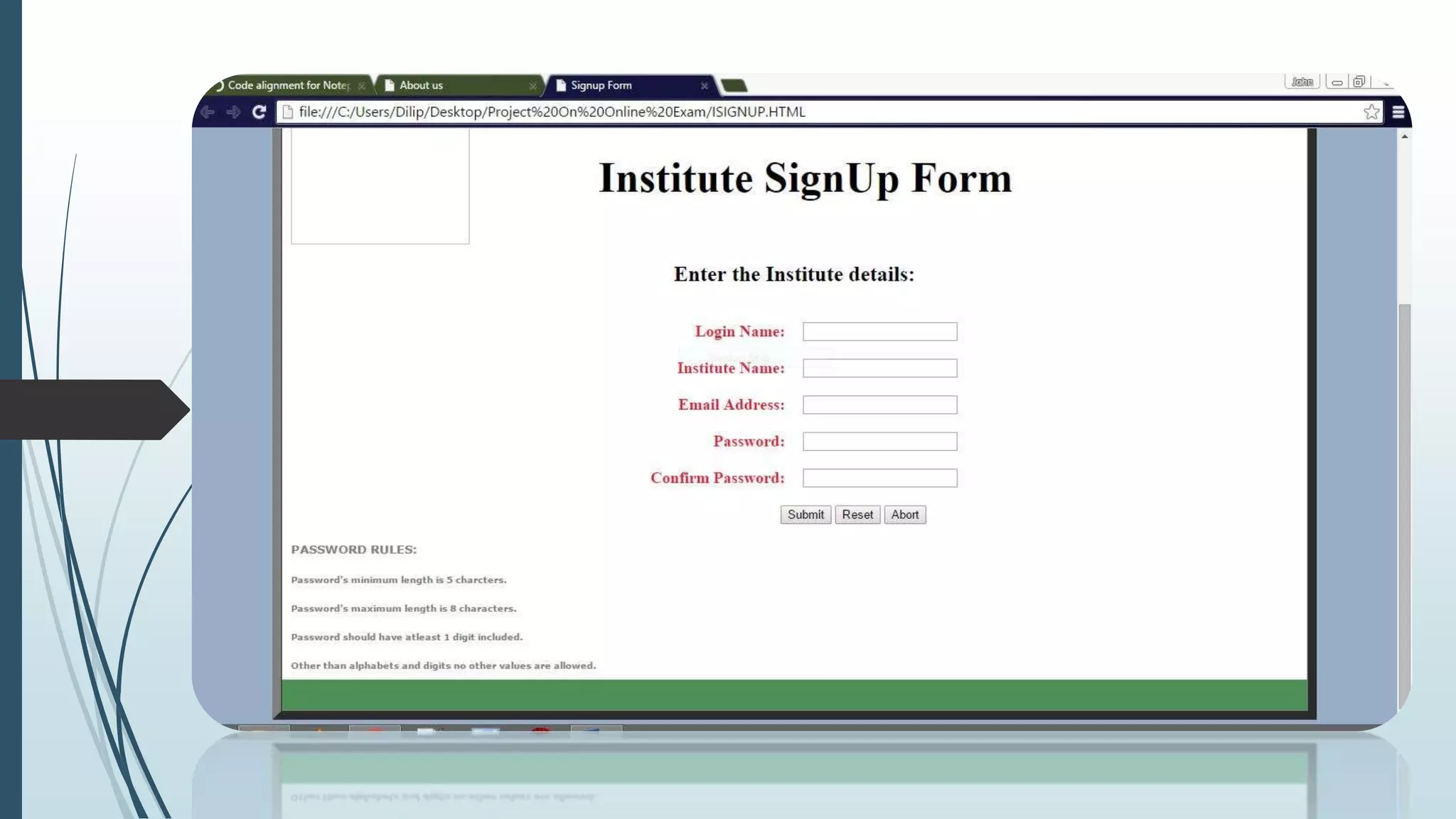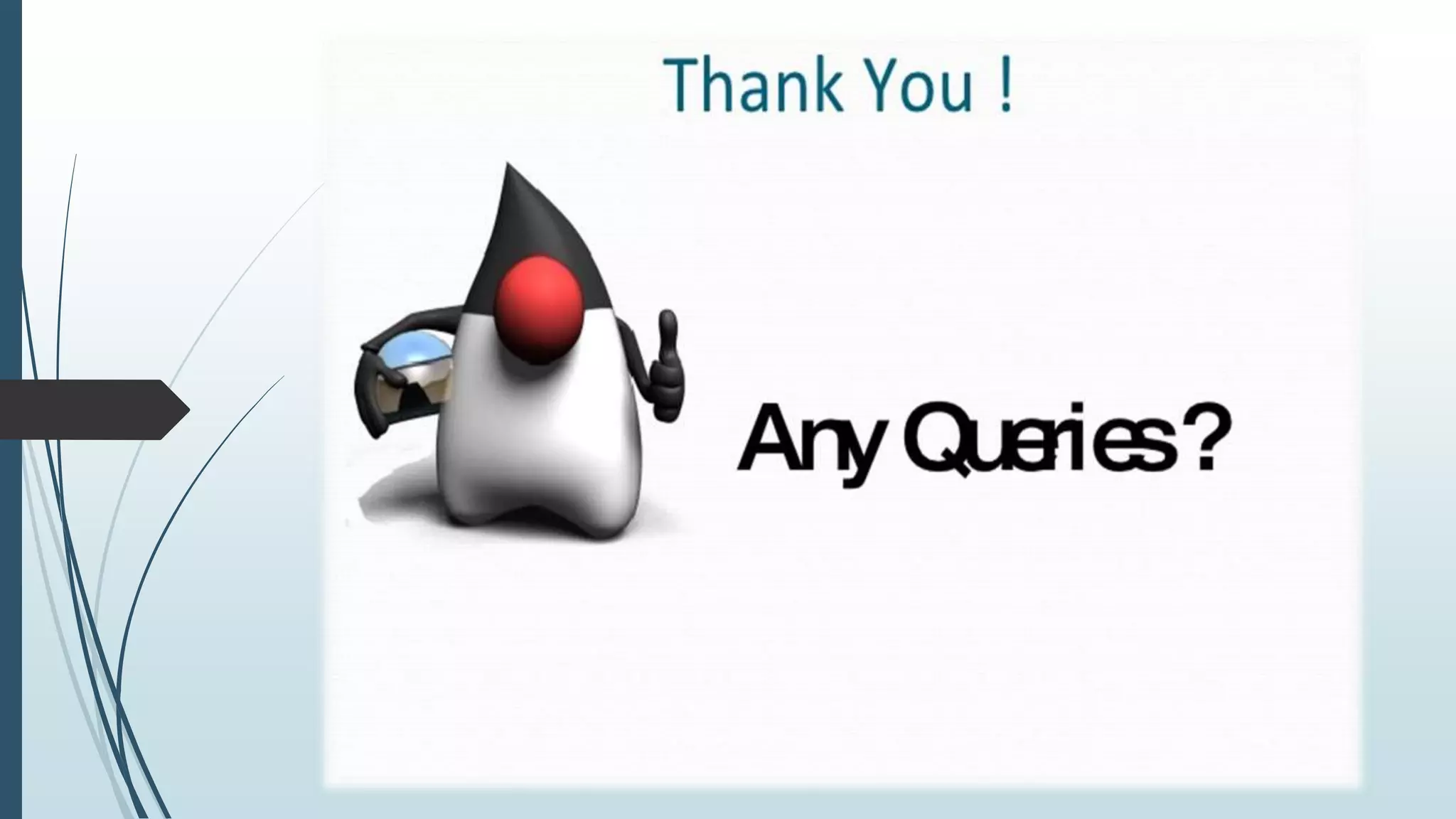This document provides an introduction to Java programming language. It discusses that Java was originally developed by Sun Microsystems in 1991 and was originally called OAK. It describes key characteristics of Java like being simple, object-oriented, distributed, interpreted, robust, secure, architecture-neutral, portable, multithreaded and dynamic. It also discusses features of the Java Virtual Machine like garbage collection, just-in-time compilation, security, and class loading. The document then covers Java versions, data types, naming conventions, object-oriented concepts like objects, classes, inheritance, polymorphism, abstraction and encapsulation. It concludes with brief descriptions of MySQL database.


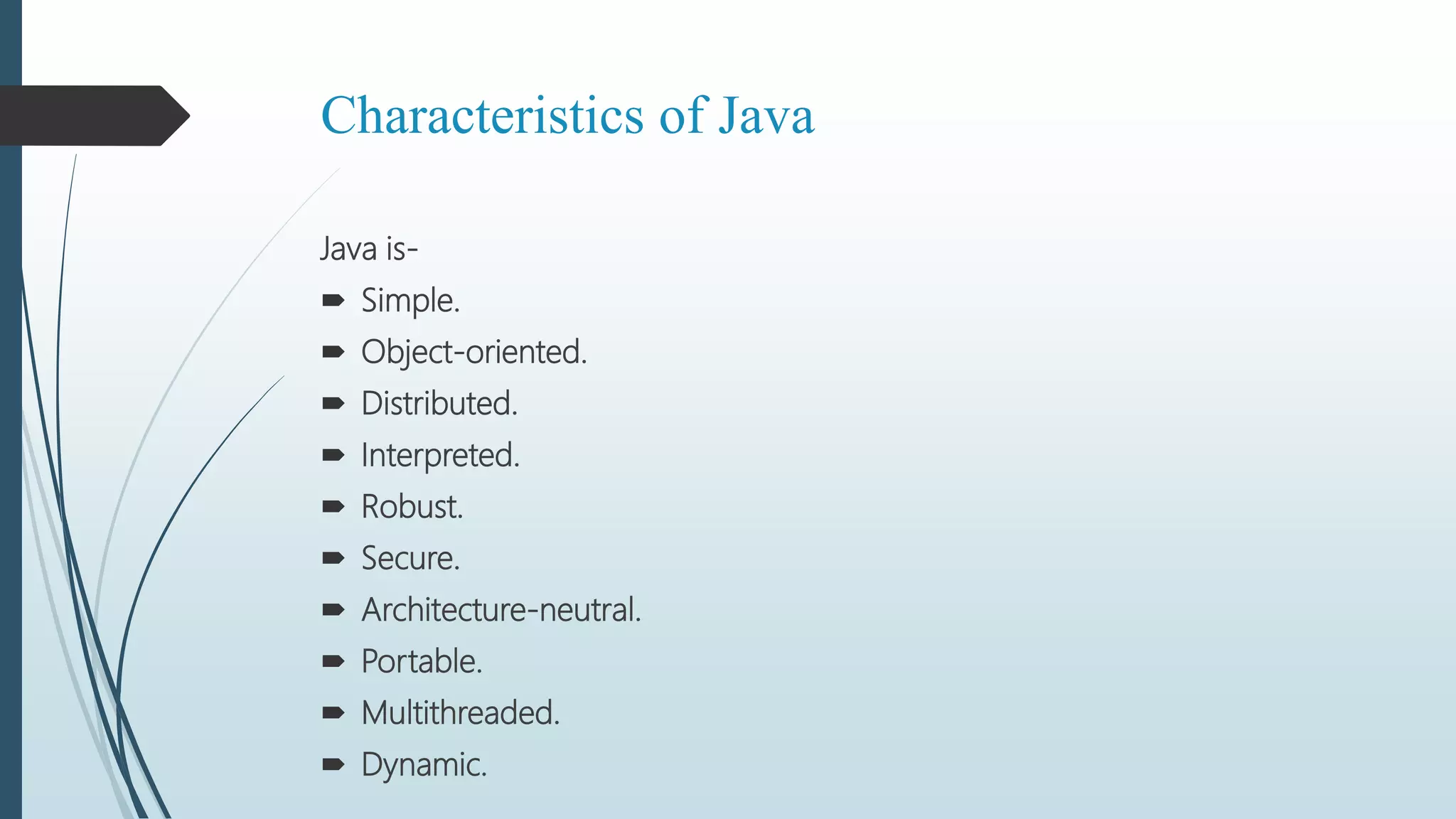


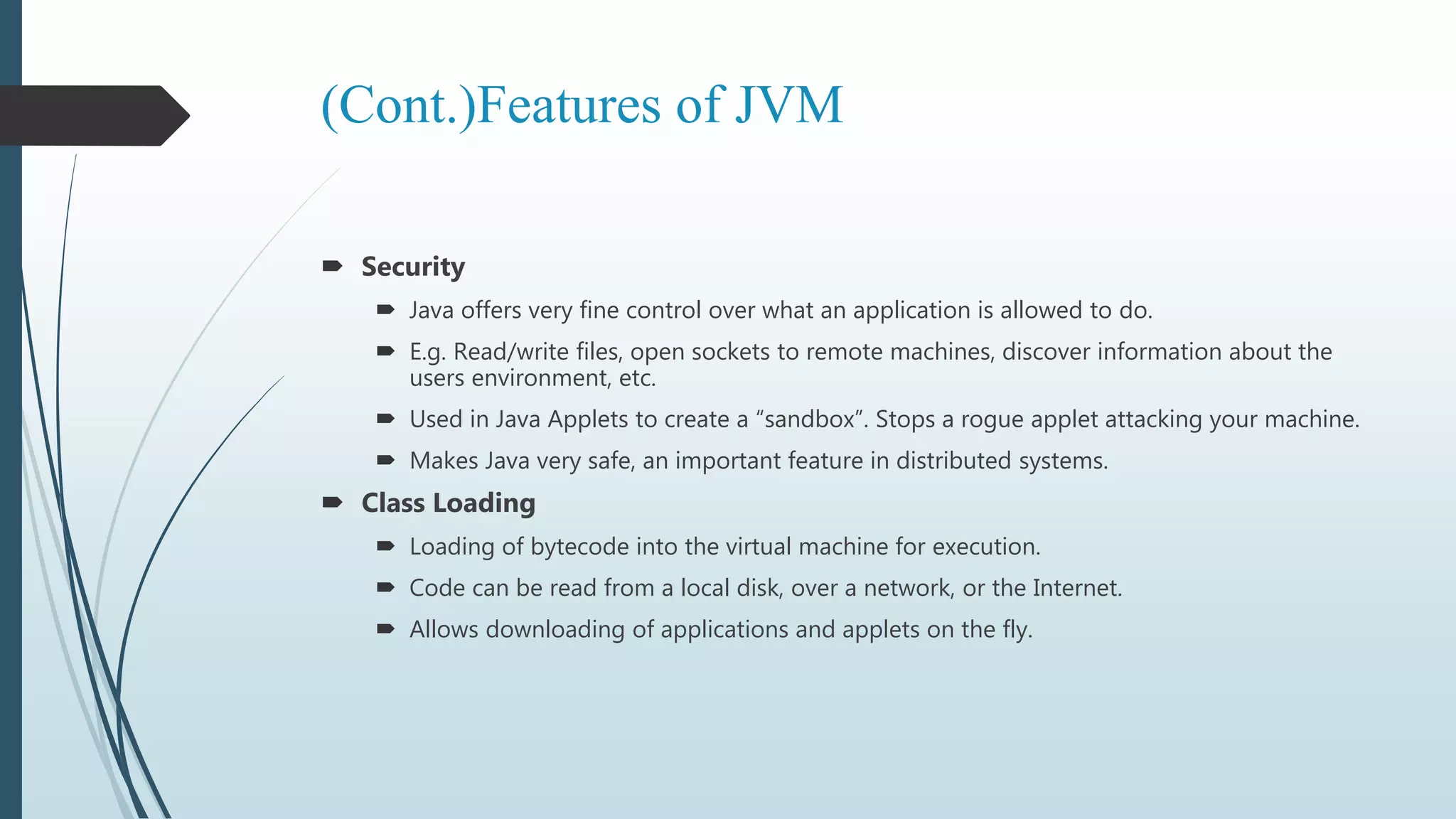
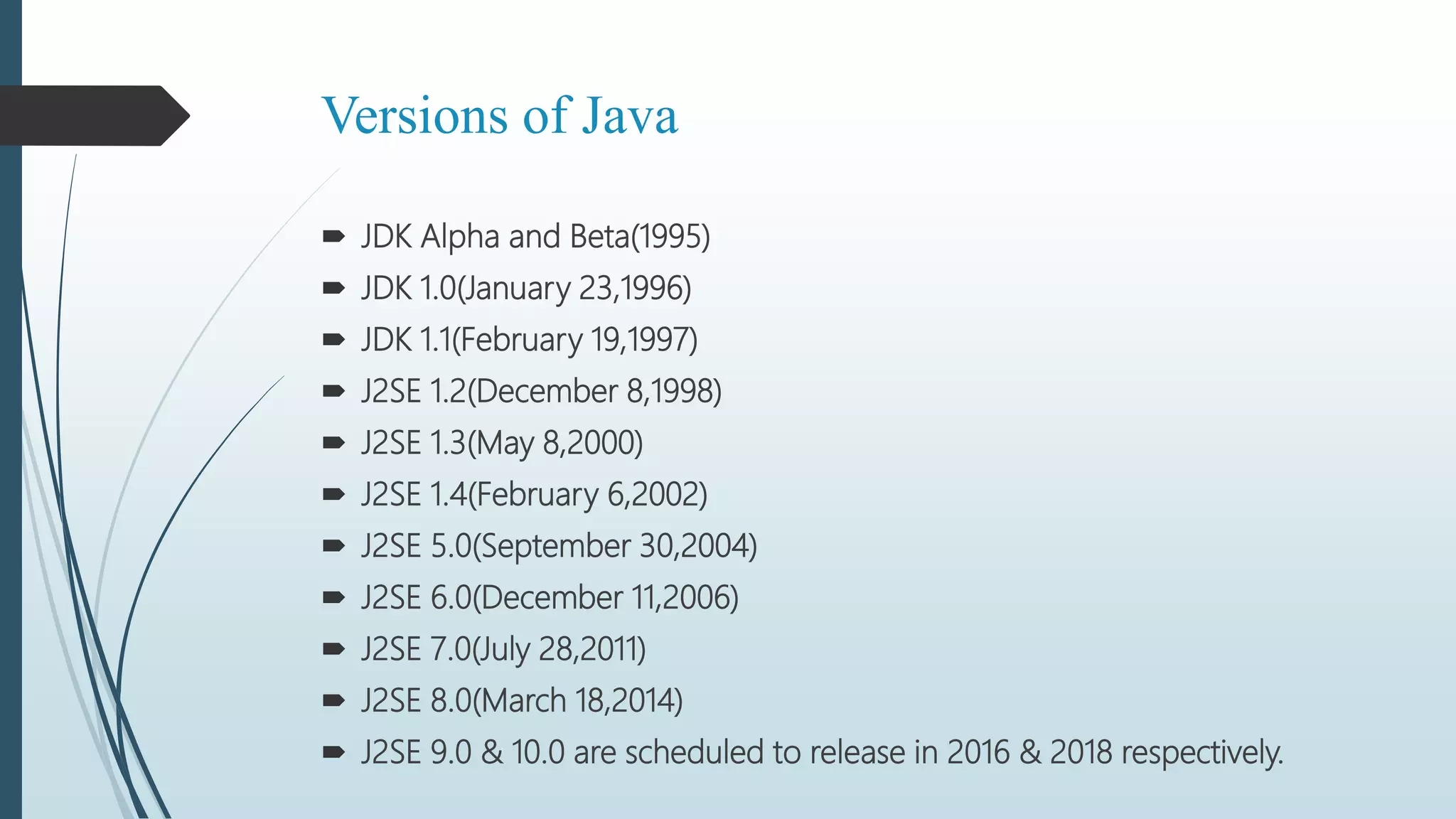
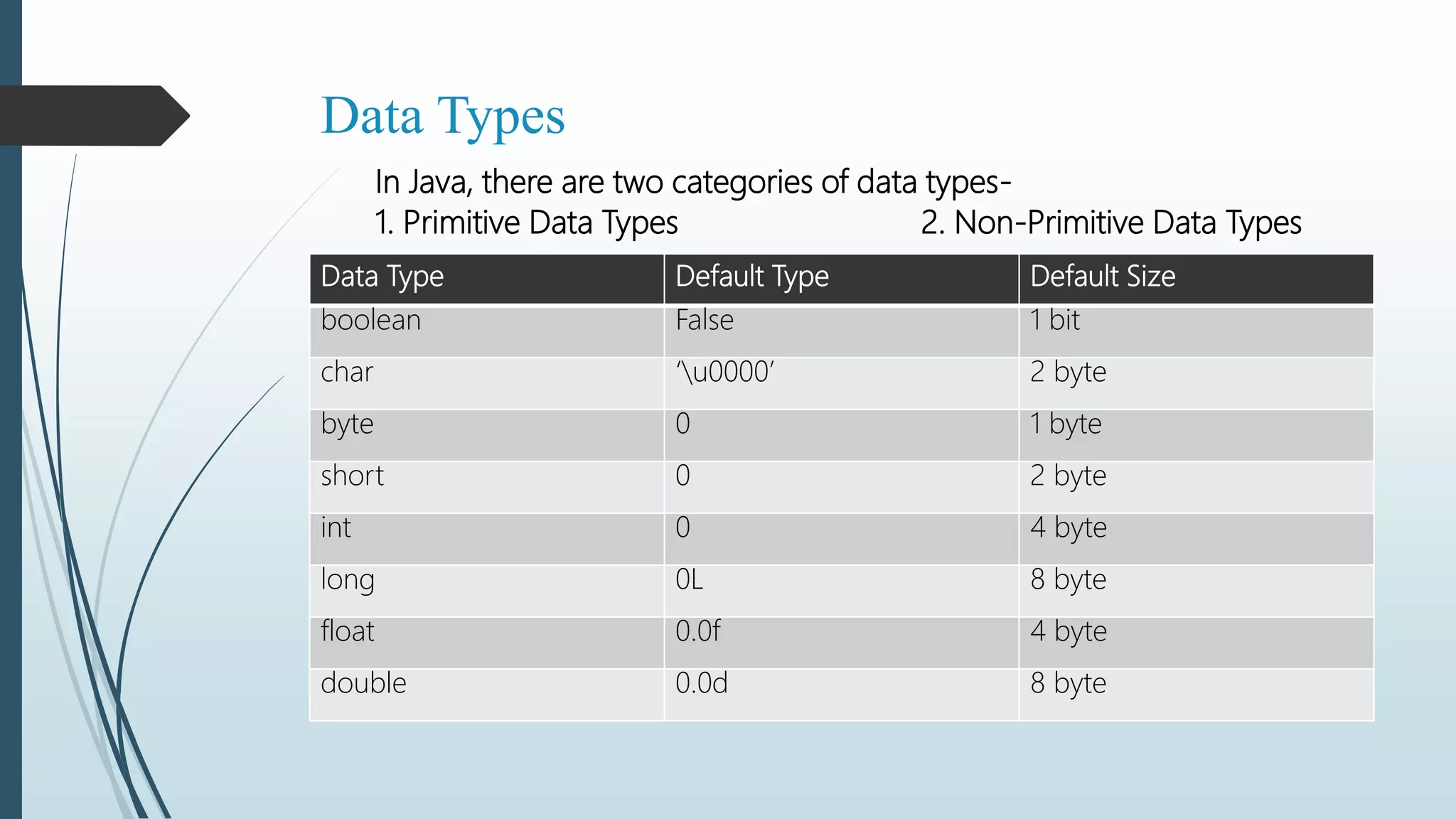
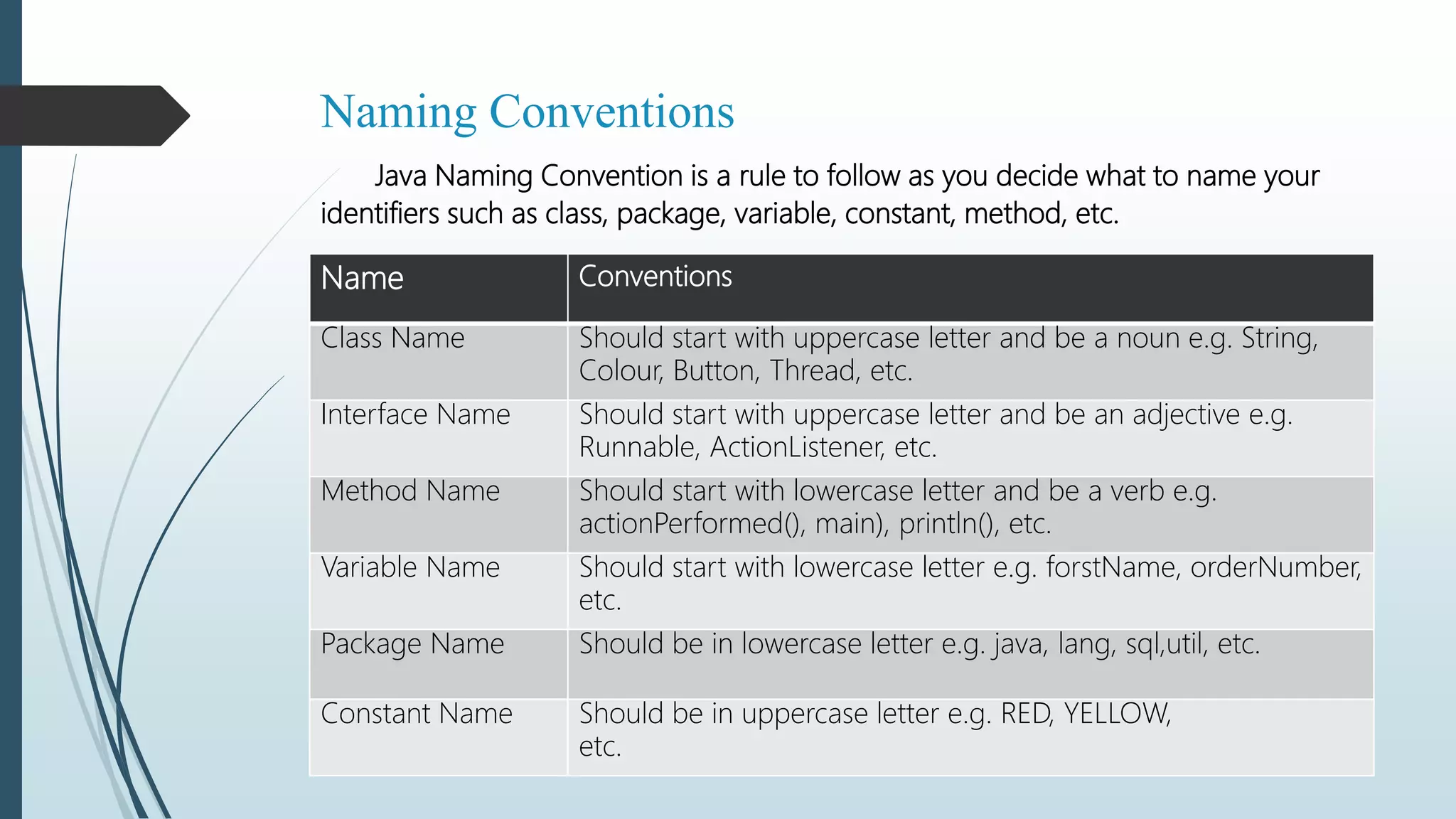
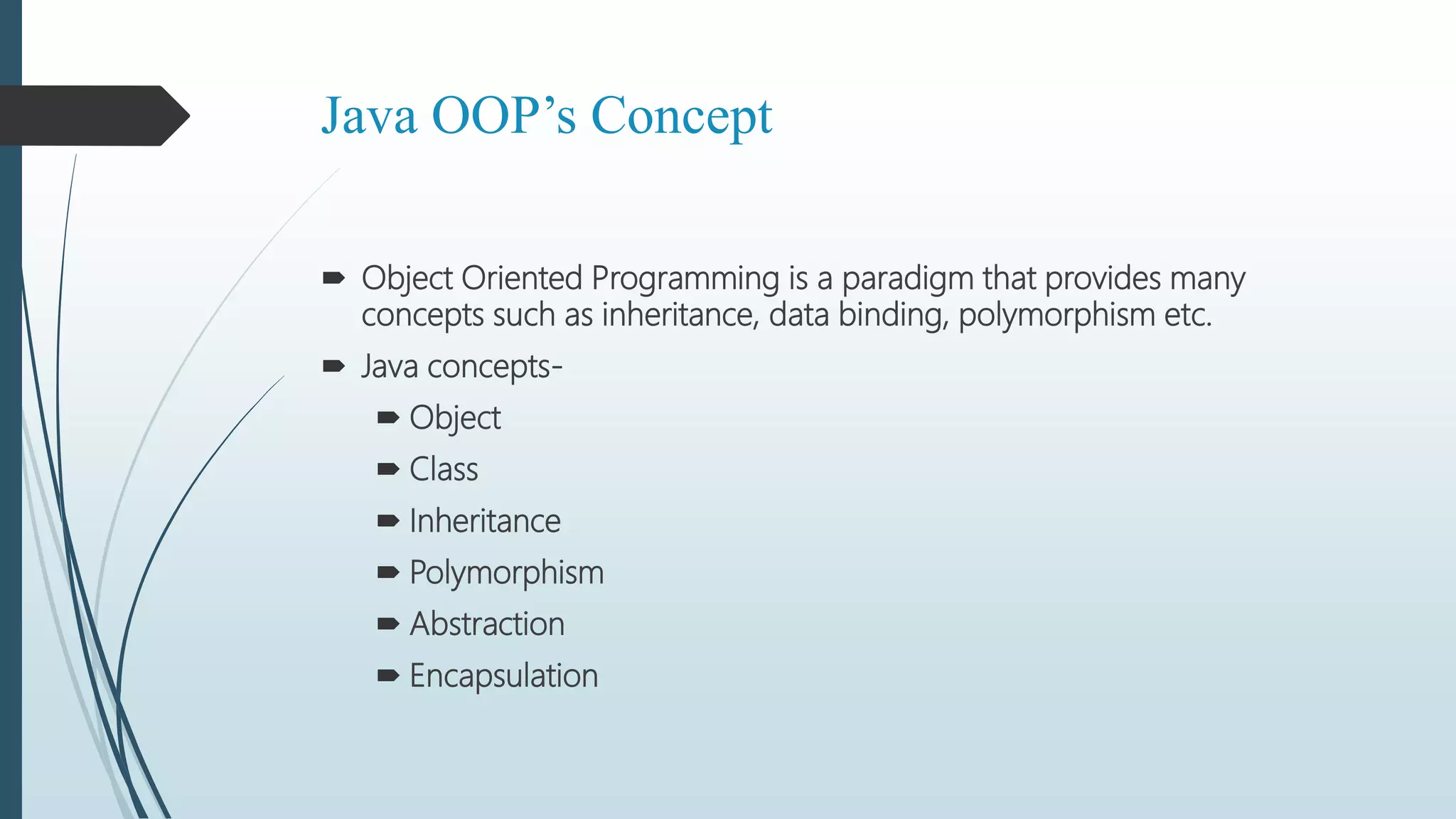
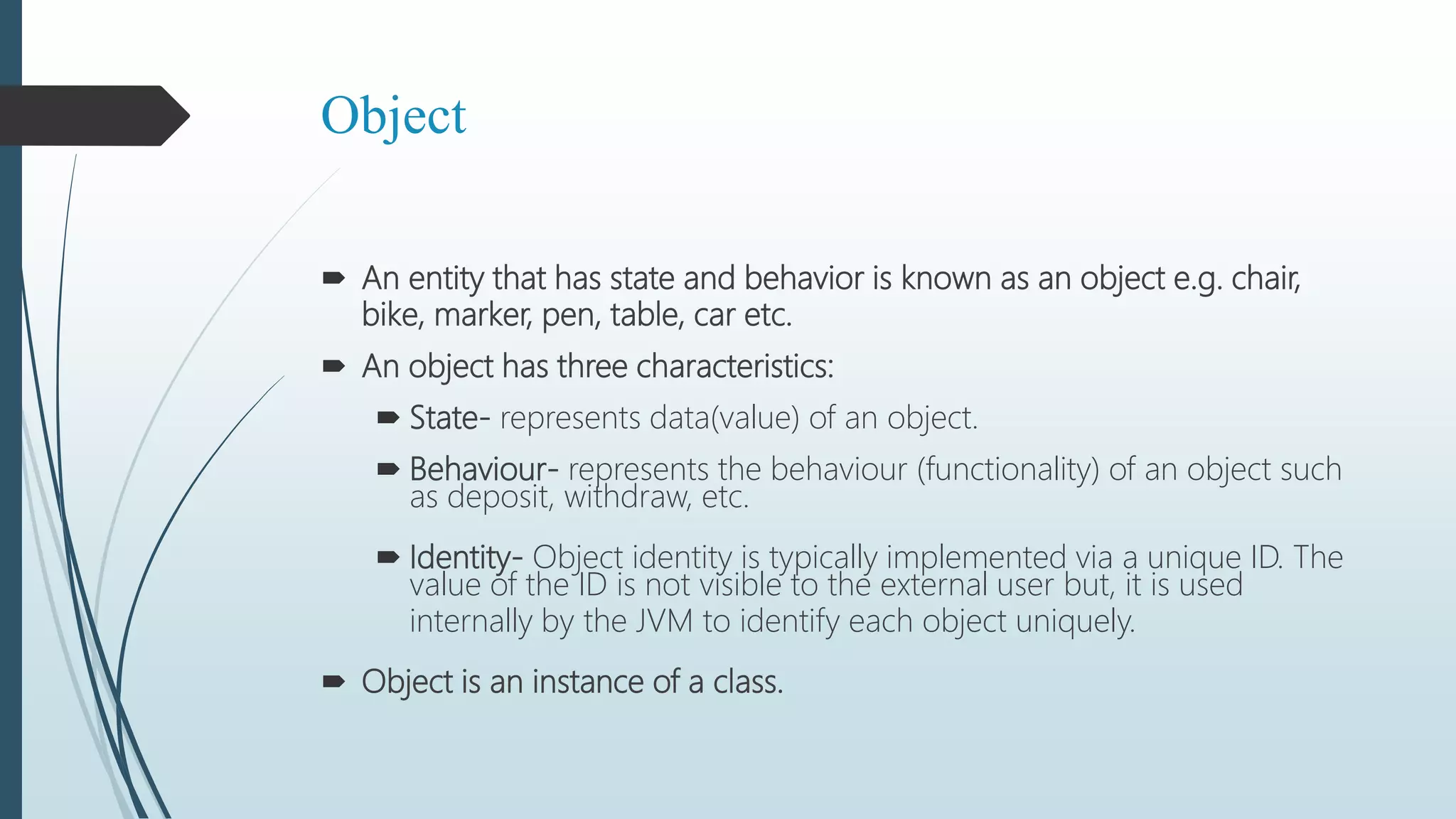

![Example of Class
class Student{
int age;
String name;
void printData(){
System.out.println(“Name:”+name+”nAge:”+age);
}
public static void main(String args[]){
Student st=new Student();
st.name=“John”;
st.age=22;
st.printData();
}
}](https://image.slidesharecdn.com/7e798603-9cf2-40f7-8e69-8e0ba460148f-160917134016/75/Java-PPT-13-2048.jpg)
